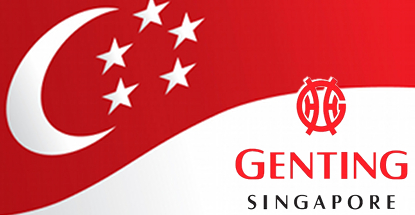Casino operator Genting Singapore got badly beaten up in Q4 by its VIP gamblers, who helped push company profits down by nearly a third.
Revenue in the three months ending Dec. 31 slipped just 8% to S$637.9m, but earnings fell 17% to $166m and net profit after tax fell 30% to $118.9m. Things were a little brighter on the full year front, with revenue up 1% to $2.86b, earnings down 3% to $836m and profit down 10% to $635m.
The company, which operates Resorts World Sentosa (RWS) in Singapore and recently broke ground on its Resorts World Jeju project in South Korea, blamed its Q4 slide on high rollers with hot hands. The company said RWS’ mass and premium mass segments displayed “respectable growth” but the VIP business experienced “significant below average win percentage and rolling volume.”
Taking a page from Crown Resorts’ book, Genting argues that if you applied theoretical normalized hold percentages to its VIP business, earnings would have risen by close to a third. Sadly, we don’t live on Theoretical Normalized Earth, where Brad Pitt is a lot less handsome and the rest of us are a lot less fugly.
Speaking of fugly, Genting’s bad debt provisions were up, up and away as more high-rollers proved unable or unwilling to honor their casino markers. For Q4, bad debts were up nearly 43% to $82m while the full year figure was up nearly 42% to $185m.
Genting’s results are all the more fugly given the stellar Q4 numbers posted by their crosstown rival, Marina Bay Sands (MBS). The Las Vegas Sands property posted revenue gains of over 27% in Q4. MBS also enjoyed a 98.3% occupancy rate while RWS could manage only 93%.
Genting acknowledged that “the business environment around us has changed rapidly and we face stiff competition,” both in Singapore and from other regional players all chasing the same dwindling supply of high-rollers. Genting says the “macro-economic ecosystem has been altered to an extent that the gaming industry has to adjust to a new norm.” These adjustments include RWS “reorganizing its gaming programmes to focus marketing initiatives towards the foreign premium mass and mass market segments.”
